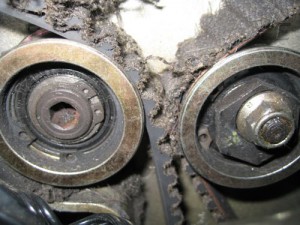A car that refuses to start can have any number of things wrong with it, but by far the most common is a dead battery. Rather than paying a tow truck to bring it in to the shop here at Cars for Keeps, there are a few simple ways to diagnose whether your battery is dead or something more serious is amiss.
Here are a few simple ways to check if it’s time to get a new battery or some professional help from a mechanic.
Try turning the headlights on. If you turn the ignition key and hear a “click”, but the engine doesn’t roll over, this is a good indicator that there’s not enough juice to turn the engine. A good way to double-check this is to try the electrical system by turning on your headlights and attempting to honk the horn. If they don’t work, it’s a likely bet your engine is dead. If your lights work but the engine might roll over, there may be a problem with your carburetor or fuel injector, and it’s time to bring it in to Cars for Keeps for some car battery repair.
Check for dirty or faulty battery connections. Put on some non-conductive (latex) gloves, pop the hood and check the cable connections to your battery. If you’re not at all mechanically inclined, simply look for the two large lead terminals protruding from a box, with cables leading out from the terminals. Wiggle the clamps to see if their loose, then reaffix them securely to the terminals. Clean excessive dirt from the lead terminals if they’re dirty, then try starting the car again. If it still doesn’t start, it’s probably time to visit Cars for Keeps for some car battery maintenance.
Try jumpstarting the battery. Just like in Princess Bride, car batteries have different levels of “deadness”. A car battery that’s mostly dead will start when jumpstarted. If the car does jumpstart, you’ll want to make sure the engine is turned on long enough for the car to recharge. If it doesn’t restart, the car battery is likely all dead – or something more serious is wrong. Rather than looking through its pockets for loose change, give us a call.
Faulty alternators, fuel injectors and carburetors can often mimic a dead car battery, so if your vehicle has reoccuring start problems or none of the above tests work, it’s a good idea to have a professional mechanic take a look under the hood. Catching these types of problems before they blossom into a full breakdown can save on hefty repair costs.
 The failure of a timing belt is one of the most common reasons why cars break down. If you are familiar with the timing belt, how it functions and how to identify whether or not something is wrong with it, then you can prevent serious damage to your car and you’ll know when to replace it. Knowledge about timing belt symptoms will save you from having to experience being stuck on the side of a road because of a broken timing belt.
The failure of a timing belt is one of the most common reasons why cars break down. If you are familiar with the timing belt, how it functions and how to identify whether or not something is wrong with it, then you can prevent serious damage to your car and you’ll know when to replace it. Knowledge about timing belt symptoms will save you from having to experience being stuck on the side of a road because of a broken timing belt.
